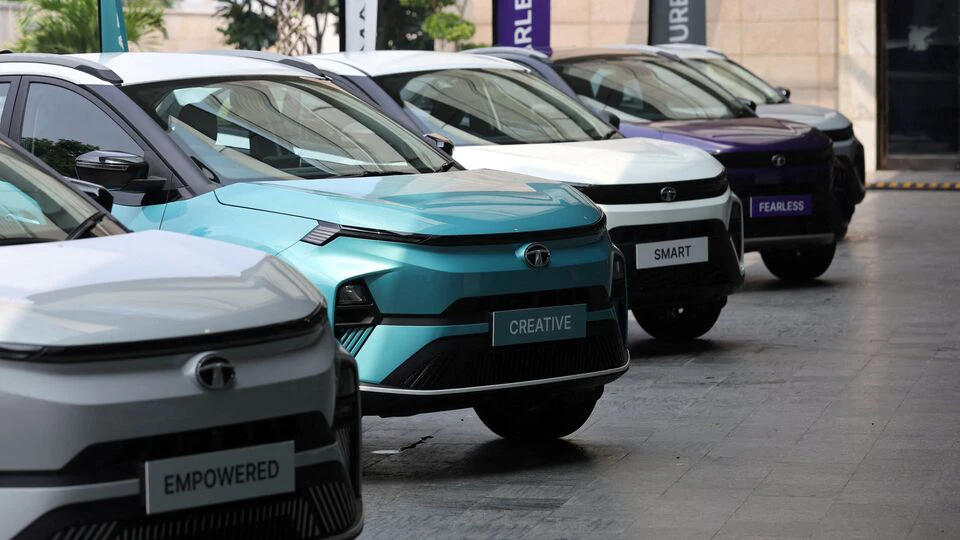If you’ve spent any time on the roads in India lately, it’s clear that a tectonic shift has occurred. The erstwhile-ruling, sensible hatchback and the dignified sedan now find themselves taking second place to an entire flotilla of Sports Utility Vehicles (SUVs).
It is not a momentary whim of fashion, but a deep structural reconfiguration of the Indian auto industry fueled by a strong confluence of macroeconomics, infrastructure realities and most convincingly human desire. In order to fully appreciate the extent of this boom, we have to consider the data, and the hub, of the Indian consumer.
The numbers game: From niche player to market king
The transition from being a niche fraction to the market center has been spectacular and highlights the uncontested monopoly of the utility vehicle. The most telling figure is the sheer market plurality that the segment enjoys today. Starting at a modest share of around 17 per cent of the total Indian Passenger Vehicle (PV) market in the fiscal year 2016, the SUV segment has aggressively expanded its territory.
Recent data shows that Utility Vehicles (UVs), which include SUVs and MUVs, now account for well over 50 per cent of total PV sales, even driving as much as 65 per cent of the 4.3 million units sold in the most recent fiscal year, FY2024-25.
(Also Not Creta, Scorpio: This Tata is India’s best-selling SUV, 22,500+ units sold)
This explosion in demand directly correlates to staggering growth outperformance: while the overall market enjoys modest single-digit growth, the SUV segment consistently records high double-digit growth. To illustrate, in April 2024, sales of SUVs increased by around 19 per cent year-on-year, creating a critical cushion for the industry against the sharp 22 per cent downturn at the same time in the conventional hatchback and sedan spaces. This points to an irreversible consumer shift, not organic growth of the market.
Most importantly, the boom is fueled by the democratisation of the ‘SUV’, which has happened mainly in the Sub-4 meter and Compact SUV space. That’s where the affordability meets the aspiration, as the domestic manufacturers, including the traditional small-car majors such as Maruti Suzuki, have inundated the market with the likes of Tata Punch, Maruti Brezza, and Kia Sonet.
By providing the SUV size and road presence at a price level close to that of a premium hatchback or base sedan (usually beginning at ₹7 lakh), they’ve positioned the upgrade within reach of much larger customer segments, including many first-time buyers.
The human and road factor: Aspiration meets reality
The reasons for selecting an SUV are more a matter of what the car stands for and how well it adapts to the specific challenges of the Indian driving scene. Psychologically, the SUV captures beautifully the ‘Aspiration Quotient’ of an emerging economy. A bigger, taller car in India is tied inexorably to success, stability, and mobility.
The raised driving position yields an enlarged view of the road, which drivers see as increased control and protection in crazy city traffic. This emotional identification makes the SUV the perfect buy for the expanding, wealthy middle class, especially the youth cohort (usually 25 to 40 years old) who see the aggressive, muscular styling of contemporary SUVs not only as functionality, but as a statement of their success and lifestyle.
In reality, the boom is sealed by India’s pothole-proof infrastructure. As expressways are being upgraded, the everyday commute usually means driving over huge speed breakers, litter, and monsoon-worn roads. The SUV’s naturally higher ground clearance, a useful feature that reduces scraping and damage, provides an essential protection against these situations, making it a practical option that performs better than a low-slung sedan.
Furthermore, the inherent structure of an SUV contributes to a strong perception of safety; in impact-based collisions, the greater mass and robust body-on-frame or reinforced monocoque chassis give occupants a greater sense of security, a factor that is non-negotiable for families.
(Also Why automakers are banking on this festival season like never before)
The OEM strategy: Manufacturers fueling the fire
This consumer shift hasn’t happened in a vacuum; it’s been actively and intelligently monetised by the automotive industry itself. The underlying motive for carmakers is the undeniable fact of profitable product strategy. SUVs, especially in the compact and mid-size segments, enable automakers to charge a much higher margin than in the case of small vehicles since they can fill out these vehicles with high-value features such as panoramic sunroofs, advanced infotainment systems, and Advanced Driver Assistance Systems (ADAS).
This feature democratisation approach, taking high-end kit to mass market models, adds value to the car without radically pushing the price tag to exclusionary levels. Therefore, we have seen a huge product portfolio shift across the industry.
Companies are deprioritising R&D and investment in small cars and sedans, putting their entire launch agenda behind utility vehicles. OEMs such as Hyundai, Tata and Mahindra, which were successful in having a long lineup of products across petrol, diesel, and electric powertrains, are major beneficiaries, attaining record sales and creating a “winner-takes-most” scenario in the market.
